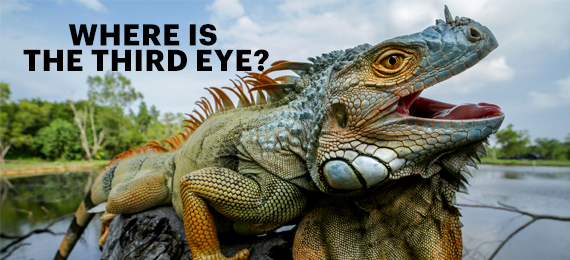
Secret Fact About Iguana Third Eye:
Are you up for a quiz on Iguanas Eye Facts? Find why they evolved into having three eyes and more fascinating Iguana facts with TriviaSharp now! Read below Secret Fact About Iguana Third Eye below..
Why Do All Vertebrates Have Two Eyes?
Most invertebrates have at least four eyes, to begin with. These are capable of detecting prey and threats. So why do vertebrates have only two eyes save for a few species like lizards, lampreys, and other reptiles/fish?
Invertebrates are small, swift movers, and generally hunt at night. On the other hand, vertebrates are flexible and have very few predators and natural threats given their size. The extra eyes help invertebrates to get a 360 view.
Do Iguanas Have 3 Eyes?
- A. Yes
- B. No
Vertebrates evolved past this constraint and have only two separate eyes that are capable of detecting prey and predators from afar. Most of the time, the eyes are set close together facing the same direction to give the animal a 180° panoramic view. While a few are capable of rotating protruding eyes to get a 360° view of their surroundings.
Iguana Eye Facts
Yes, Iguanas really have three eyes! They are one of the very few vertebrates to possess a third eye. The third eye is scientifically called the parietal eye and is located on the top of the head. The eye is not photoreceptive, meaning, it is not capable of identifying images. So, what is the use of this eye?
Iguana Third Eye Use
The third eye in Iguanas or any other vertebrates for that matter is only capable of detecting movement, temperature, and partial light. The parietal eye in these exotic pets protects them from predators like birds. Birds are capable of snatching these arboreal animals from their habitat in one swoop.
The eye makes up for the lack of necks in these vertebrates helping them to see what is happening above them. The third eye in Iguanas lies camouflaged and flat on their skin. The lack of distinct pupils makes it difficult to identify the third eye from afar.
Things to Know About Iguanas
- Excess biliverdin over hemoglobin can be life-threatening. Iguanas have the highest level of biliverdin content among any animal. This makes their blood seem green.
- Iguanas really mean and are not child-friendly. They require years to bond with their owners. Even then the chances of them not attacking you are less.
- Iguanas are really big. They can grow to be 6 feet tall from head to tail and require a lot of space to climb and roam around in captivity.
- The temperature needs of Iguanas are crucial. They need UV lights and hot/cold places in their habitat to thrive.
- Though Iguanas are omnivores they prefer a herbivore’s diet over anything else.
- There are several Iguana species that can swim underwater.
- Iguanas can detach their tails when threatened. The tails will grow back after 1 year.
Interesting Facts About Iguanas
- Iguanas can run faster than Usain Bolt but prefer to lay around most of the time.
- Iguanas don’t make a lot of noise and communicate with each other through eye movements. They can create sneeze or snort-like noises occasionally.
- Green Iguanas are popular and cheap because they are easily available.
- Captive Iguanas can live for more than 15 years if cared for properly.
- Iguanas are very intelligent and will try to escape their cages frequently.
- Male Iguanas show aggression to impress a female.
- Few Iguana species can change color when threatened.